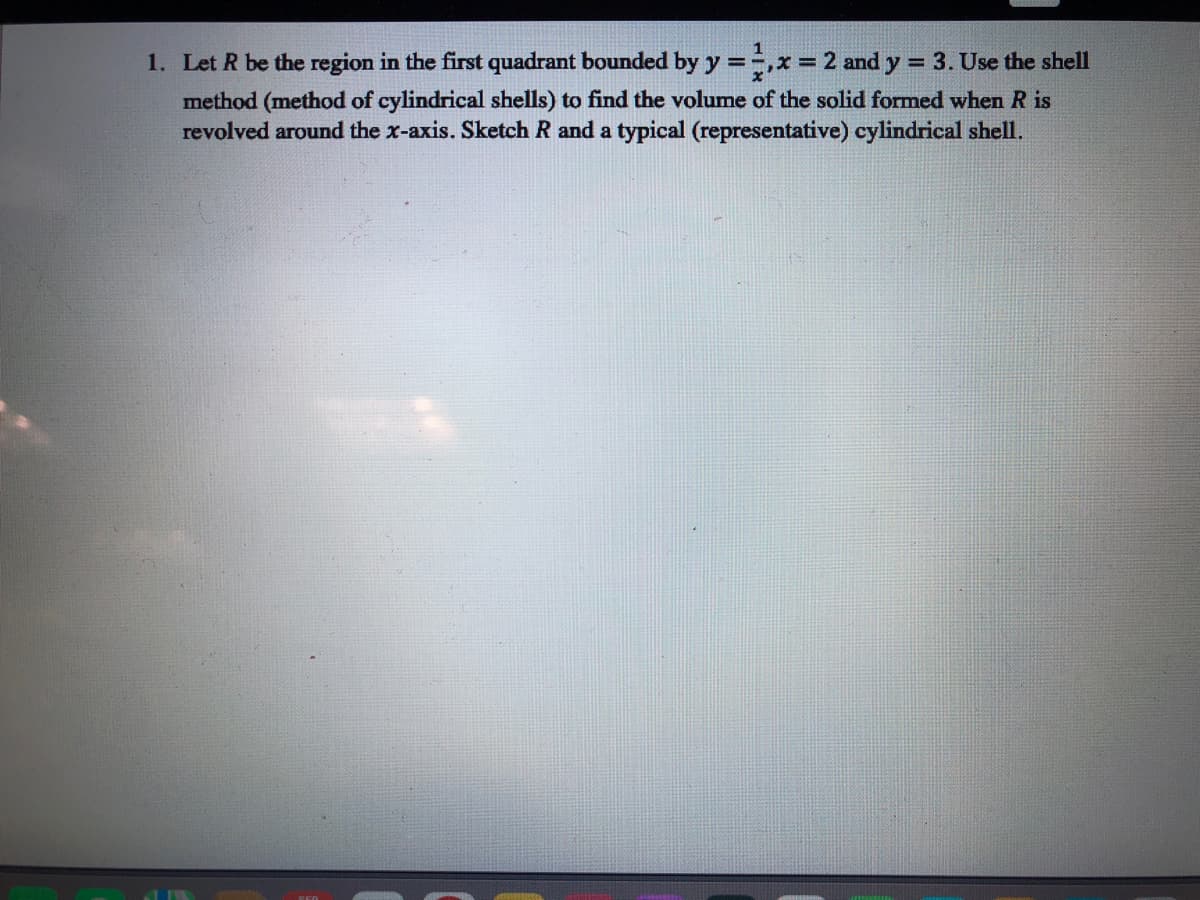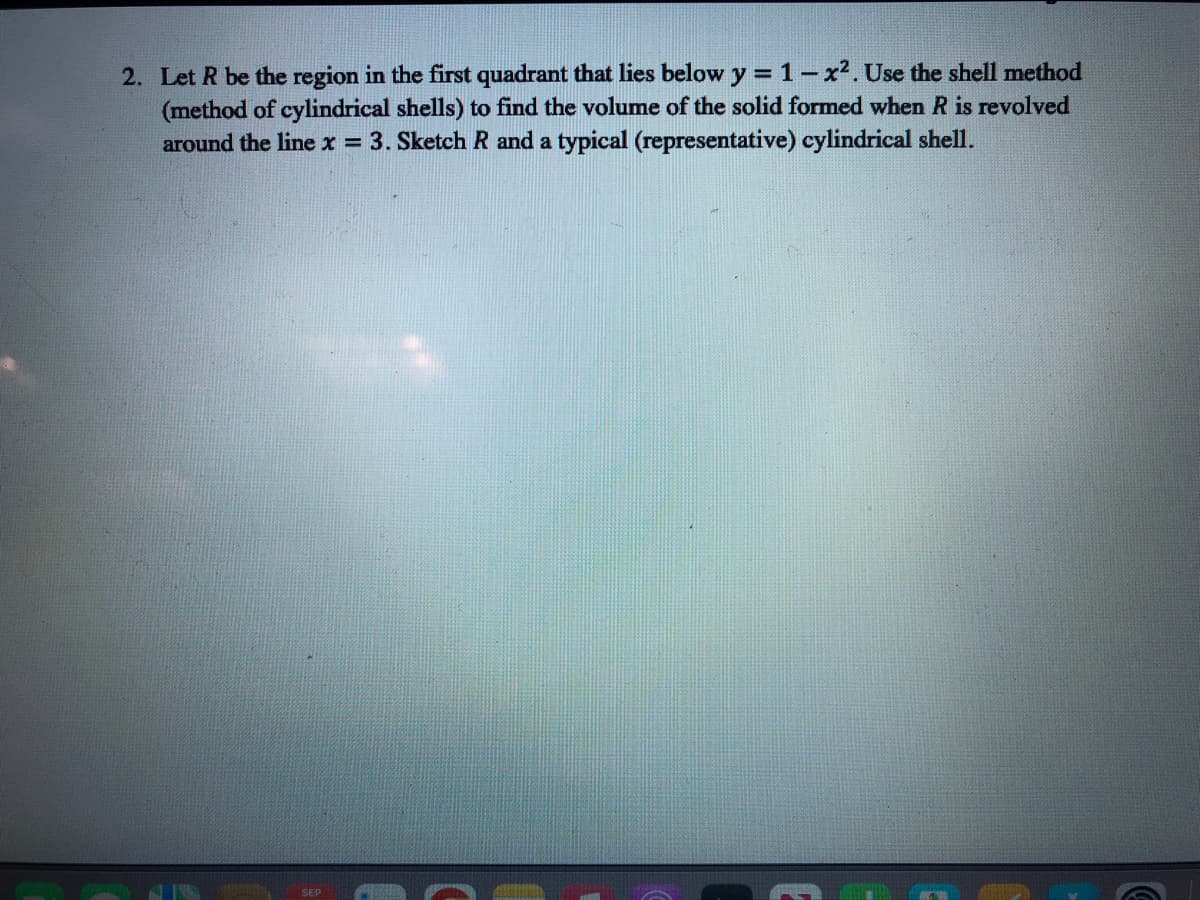1. Let R be the region in the first quadrant bounded by y = 1, x = 2 and y = 3. Use the shell method (method of cylindrical shells) to find the volume of the solid formed when R is revolved around the x-axis. Sketch R and a typical (representative) cylindrical shell.
1. Let R be the region in the first quadrant bounded by y = 1, x = 2 and y = 3. Use the shell method (method of cylindrical shells) to find the volume of the solid formed when R is revolved around the x-axis. Sketch R and a typical (representative) cylindrical shell.
Elementary Geometry For College Students, 7e
7th Edition
ISBN:9781337614085
Author:Alexander, Daniel C.; Koeberlein, Geralyn M.
Publisher:Alexander, Daniel C.; Koeberlein, Geralyn M.
Chapter10: Analytic Geometry
Section10.1: The Rectangular Coordinate System
Problem 41E: Find the exact lateral area of each solid in Exercise 40. Find the exact volume of the solid formed...
Related questions
Question
Help with the following questions: question 1 and 2

Transcribed Image Text:1. Let R be the region in the first quadrant bounded by y = 1, x = 2 and y = 3. Use the shell
method (method of cylindrical shells) to find the volume of the solid formed when R is
revolved around the x-axis. Sketch R and a typical (representative) cylindrical shell.

Transcribed Image Text:2. Let R be the region in the first quadrant that lies below y = 1-x². Use the shell method
(method of cylindrical shells) to find the volume of the solid formed when R is revolved
around the line x = 3. Sketch R and a typical (representative) cylindrical shell.
Expert Solution
This question has been solved!
Explore an expertly crafted, step-by-step solution for a thorough understanding of key concepts.
This is a popular solution!
Trending now
This is a popular solution!
Step by step
Solved in 4 steps

Recommended textbooks for you

Elementary Geometry For College Students, 7e
Geometry
ISBN:
9781337614085
Author:
Alexander, Daniel C.; Koeberlein, Geralyn M.
Publisher:
Cengage,

Linear Algebra: A Modern Introduction
Algebra
ISBN:
9781285463247
Author:
David Poole
Publisher:
Cengage Learning

Elementary Geometry For College Students, 7e
Geometry
ISBN:
9781337614085
Author:
Alexander, Daniel C.; Koeberlein, Geralyn M.
Publisher:
Cengage,

Linear Algebra: A Modern Introduction
Algebra
ISBN:
9781285463247
Author:
David Poole
Publisher:
Cengage Learning